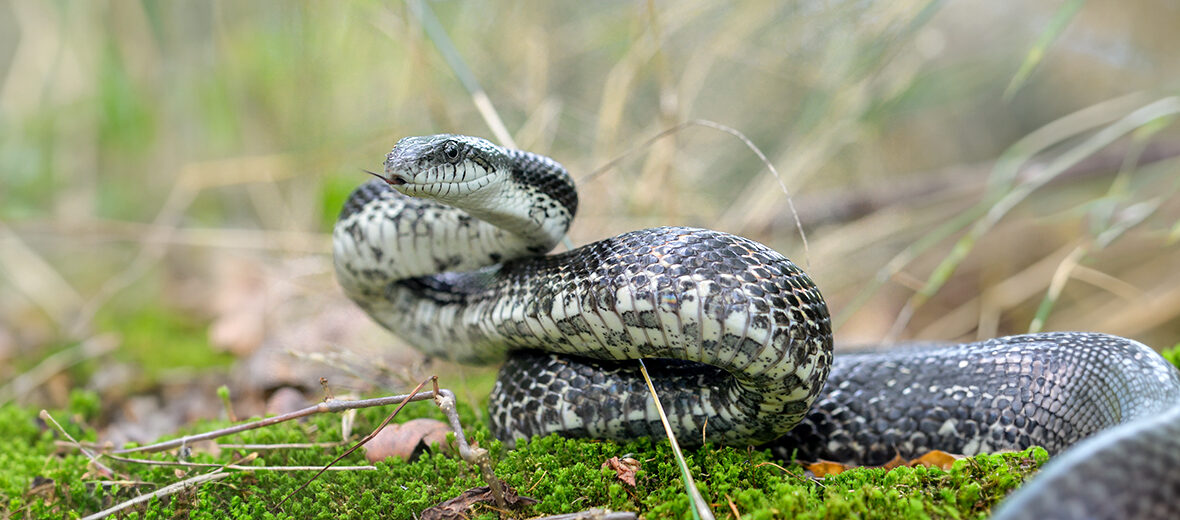
The gray ratsnake, aka gray rat snake, black ratsnake, chicken snake, central ratsnake, midland ratsnake, or pilot black snake, is a nonvenomous colubrid that can be found in midwestern and eastern United States and a small portion of southeastern Canada. They are threatened by habitat loss and destruction at the hands of residential and commercial developments, & agriculture; hunting; trapping; and invasive species, that can result in predation. However, they are abundant enough to be classified as Least Concern by the IUCN.
First the Stats…
Scientific name: Pantherophis spiloides
Weight: Up to 4.9 lbs.
Length: Up to 7+ feet
Lifespan: Up to 15+ years
Now on to the Facts!
1.) There are approximately 10 species of ratsnakes.
2.) In the southern most reaches of their territory they don’t undergo ontogenetic changes (colors change from patterned to molted or patternless) as they age.
3.) Due to the fact that the gray ratsnake shares its range with other members of its genus, hybrids of midlands and eastern ratsnakes are not unheard of.
4.) They prefer numerous types of hardwood forests and cypress stands, near tree-lined streams and fields, and even dwell near barns and sheds close to humans.
5.) Their diet consists of mice, rats, voles, moles, gophers, birds, and bird eggs. Juveniles also prey on lizards, frogs, and toads.
But wait, there’s more on the gray ratsnake!
6.) When caught off guard, they will often take up a variable “S” pose and rattle their tail in leaves to mimic a rattlesnake.
7.) If mishandled, they will raise their head and perform mock strikes. They will also musk (excrete a smelly liquid from their cloaca “anus”), and they will also bite if needed.
Did you know…?
Hatchling snakes measure up to 11.8 inches.
8.) Females produce up to 27 eggs that hatch in up to 50 days.
9.) In the state of Georgia, all indigenous, nonvenomous snakes are considered illegal to capture or kill, and are considered to be in the custody of the Georgia Department of Natural Resources.
10.) These snakes utilize constriction to subdue their prey.
11.) Raccoons, fishers, minks, coyotes, long-tailed weasels, egrets, foxes, red-tailed hawks, crows, copperheads, and more all prey on these snakes.
Now a Short Gray Ratsnake Video!
Be sure to share & comment below! Also, check out the Critter Science YouTube channel. Videos added regularly!
Want to suggest a critter for me to write about? Let me know here.
Some source material acquired from: Wikipedia & IUCN
Photo credit: Will Brown




